Invented by Ye Liu, Junxin Duan, Yu Zhang, Lan Tang, Novozymes Inc
In the healthcare industry, polypeptides with catalase activity have shown promising results in the treatment of various diseases. Oxidative stress is a common factor in many diseases, including cancer, neurodegenerative disorders, and cardiovascular diseases. By enhancing the catalase activity, these polypeptides can help reduce oxidative stress and potentially alleviate the symptoms associated with these conditions. As a result, there is a growing demand for polypeptides with catalase activity in the pharmaceutical sector.
Furthermore, the industrial sector is also recognizing the potential of polypeptides with catalase activity. These enzymes can be used in various industrial processes, such as the production of biofuels, food processing, and wastewater treatment. Catalase enzymes can help improve the efficiency of these processes by breaking down harmful byproducts and reducing the overall environmental impact. As industries strive to adopt more sustainable practices, the demand for polypeptides with catalase activity is expected to increase.
In addition to polypeptides, the corresponding polynucleotides that encode these enzymes are also gaining attention. Polynucleotides are DNA or RNA molecules that carry the genetic information necessary for the synthesis of proteins. By manipulating the genetic code, scientists can produce polynucleotides that encode polypeptides with enhanced catalase activity. This opens up possibilities for genetic engineering and the development of customized enzymes with improved properties.
The market for polypeptides with catalase activity and polynucleotides that encode the same is driven by advancements in biotechnology and genetic engineering techniques. The ability to modify and optimize enzymes for specific applications has opened up new opportunities in various industries. Additionally, the increasing awareness about the harmful effects of oxidative stress has further fueled the demand for catalase enzymes.
However, there are challenges that need to be addressed in this market. The production of polypeptides with catalase activity can be expensive and time-consuming. Scaling up the production process while maintaining the enzyme’s activity and stability is a significant hurdle. Additionally, regulatory approvals and safety concerns associated with genetically modified organisms (GMOs) can also pose challenges to the market growth.
In conclusion, the market for polypeptides with catalase activity and polynucleotides that encode the same is witnessing significant growth due to their potential applications in healthcare, industry, and agriculture. The demand for these enzymes is driven by their ability to reduce oxidative stress, improve industrial processes, and enhance sustainability. However, challenges related to production scalability and regulatory approvals need to be addressed to fully realize the market’s potential. With ongoing advancements in biotechnology, the future looks promising for this market as it continues to expand and contribute to various sectors.
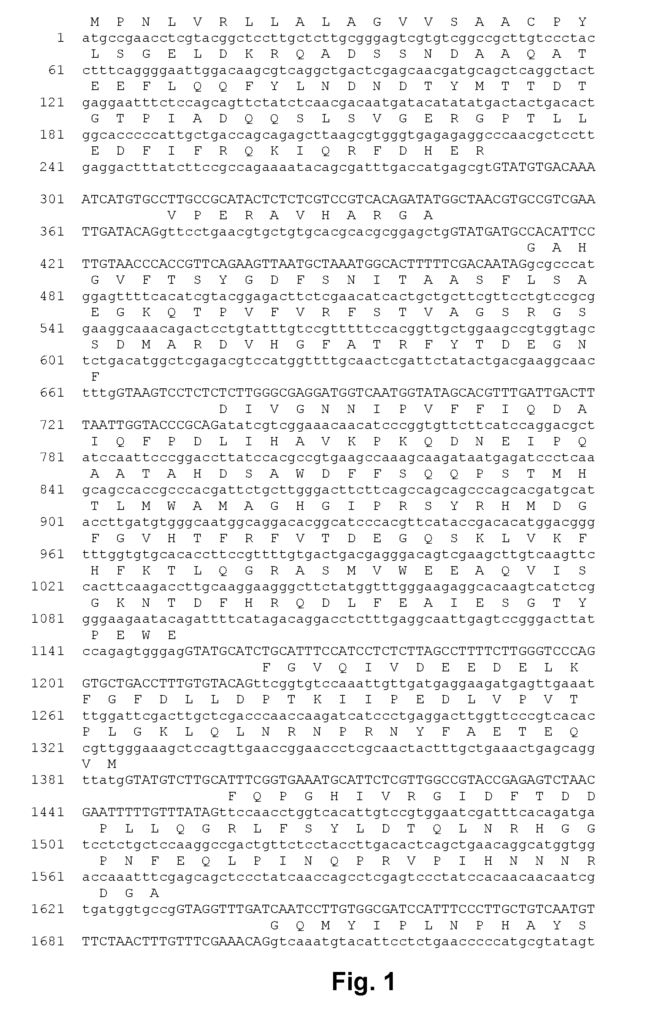
The Novozymes Inc invention works as follows
The present invention is a polypeptide with catalase activity, and polynucleotides that encode the polypeptides. The invention also pertains to polynucleotides, nucleic acids, vectors and host cells containing the polynucleotides, as well as ways of producing and utilizing the polypeptides.
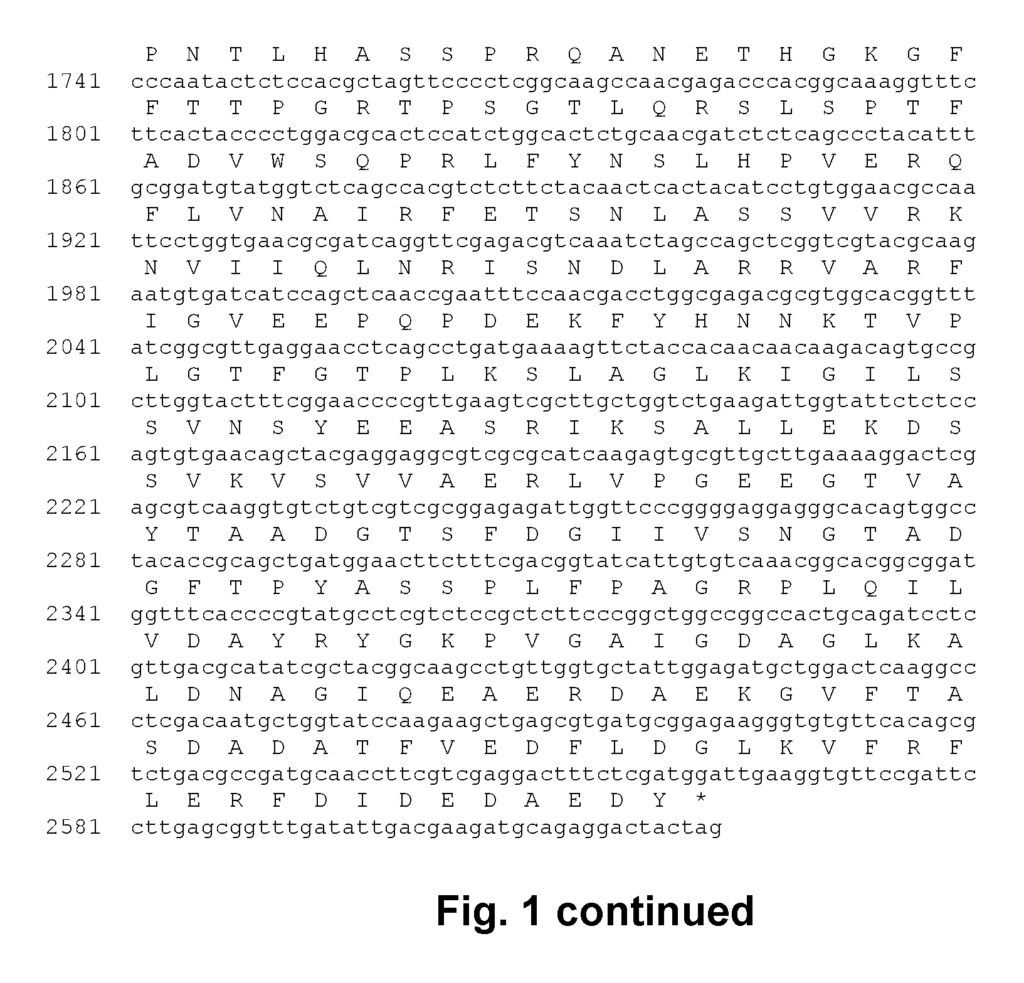
Background for Polypeptides with catalase activity, and polynucleotides that encode same
Field of Invention
The present invention is a polypeptide with catalase activity, catalytic regions, polynucleotides that encode the polypeptides and catalytic sites, as well as polynucleotides that code for these polypeptides and catalytic areas. The invention also pertains to polynucleotides, vectors and host cells that contain the polynucleotides, as well as ways of producing and utilizing the polypeptides and catalytic regions.
Description of Related Art
Catalases are enzymes that catalyze hydrogen peroxide’s (H2O2) conversion to oxygen and water. These enzymes are found in a wide variety of tissues and organisms, including plants, animals and microorganisms. (Chance and Maehly 1955, Methods Enzymol. 2: 764-791).
Catalase preparations can be used in commercially available diagnostic enzyme kits for the production of sodium-gluconate enzymatically from glucose. They are also used to neutralize H2O2 waste and remove H2O2 or generate O2 when H2O2 is present in food and beverages.
WO 92/17571 reveals a catalase that retains activity at higher temperatures and pH levels than other catalases known, derived from Scytalidium strains and Humicola strains. UNIPROT A1DJU9 reveals a catalase amino acid sequence deduced from Neosartorya fischeri. UNIPROT P30266 discloses catalase from Bacillus pseudofirmu. UNIPROT P42234 discloses the catalase polypeptide of Bacillus subtilis. JP2007143405 A discloses catalases from Thermoascus Aurantiacus.
The present invention provides catalase-active polypeptides and polynucleotides that encode the polypeptides.
The present invention relates exclusively to polypeptides with catalase activity, selected from a group consisting:
(a), a polypeptide with at least 83% sequence similarity to the polypeptide mature of SEQID NO: 8, or at least 76% to that of SEQID NO: 2, or at least 60 % to that of the polypeptide mature of SEQID NO: 4;
(b), a polypeptide encoded with a polynucleotide which hybridizes in low, medium, high or very high stringency condition with (i), the mature coding polypeptide sequence of SEQ NO: 7, or the mature coding polypeptide sequence of SEQ NO: 1, or the mature coding polypeptide sequence of SEQ NO: 3, or SEQ NO: 5 (ii), the cDNA of the (i), or (iii), the full-length
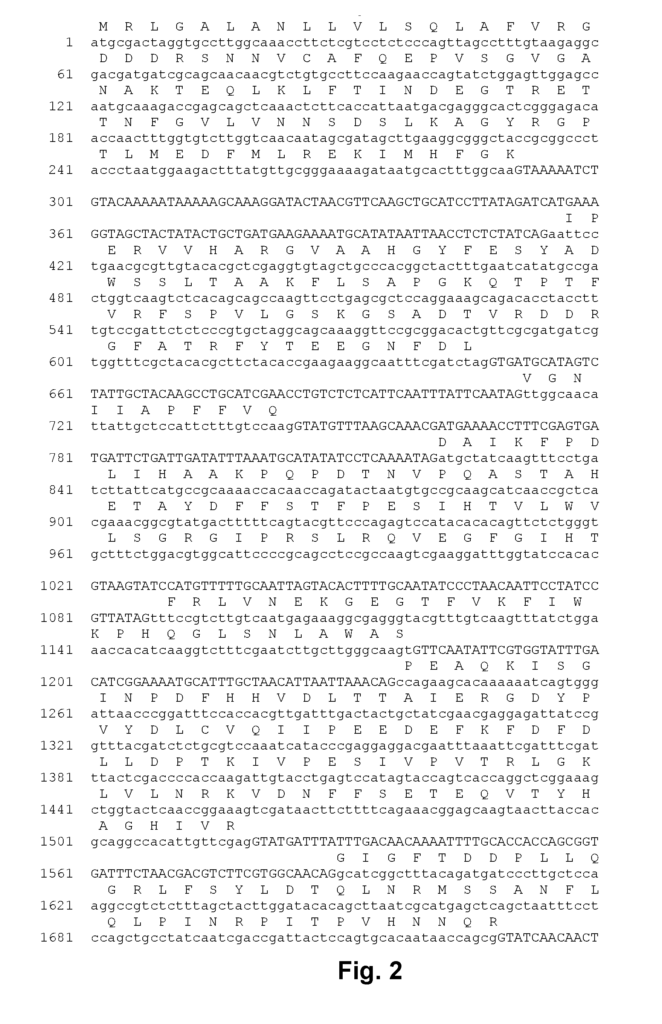
(c), a mature polypeptide-coding sequence (SEQ ID No: 7) encoded by polynucleotides having at least 83% identity in sequence to SEQID NO: 7, or at least 76% identity in sequence to SEQID NO: 1, or at least 60 sequence identity with the mature Polypeptide-coding sequence (SEQ ID No: 3), or at least 60 sequence identity with the mature Polypeptide-coding sequence (SEQ ID no: 5); or the cDNA Sequ
(d), a variation of the polypeptide mature of SEQ NO: 8, a variation of the polypeptide mature of SEQ NO: 2, or a variety of the polypeptide mature of SEQ NO: 4 or SEQ NO: 6 comprising a deletion or insertion in one or more positions (e.g. several); and
(e), a fragment from the polypeptide (a), (b), or (c) with catalase activity.
The present invention relates also to polypeptides containing a catalytic region selected from a group consisting:
(a), a domain catalytic with at least 83% identity in sequence to amino acid 20 to 740 SEQ NO: 8, or a domain catalytic with at least 76% identity in sequence to amino acid 17 to 723 SEQ NO: 2, or a domain catalytic having at minimum 60% identity in sequence to aminos 38 to 723 SEQ NO: 4;
(b), a polypeptide encoded with a polynucleotide which hybridizes in low, medium, high or very high stringency under (i), nucleotides (58) to 2473 from SEQ NO: 7, (ii), nucleotides (49) to 2601 from SEQ NO: 1, (iii), the cDNA of (i), or (iii), the full-length complementary of (i), or (iii);
(c), a domain catalysing a reaction encoded with a polynucleotide that has at least 83% identity in sequence to the nucleotides from 58 to 2473 (SEQ ID No: 7), a domain catalysing a reaction encoded with a pynucleotide that has at least 76% identity in sequence to the nucleotides from 49 to 2601 (SEQ ID No: 1), a domain cat
(d), a variation of amino acid 20 to 740 in SEQ NO: 8, or a variation of amino acid 17 to 723 in SEQ NO: 2, or a variety of amino acid 38 to 723 in SEQ NO: 4, or an variant of the amino acids from 38 to 701 of SEQ NO: 6 that includes a substitution, deletion and/or addition at one or more positions (e.g. several); and
(e), a fragment from the catalytic site of (a), b), c), or d that has catalase activities.
The present invention also relates nucleic acids constructs, recombinant expression vectors, recombinant hosts cells containing the polynucleotides and methods of production of the polypeptides.
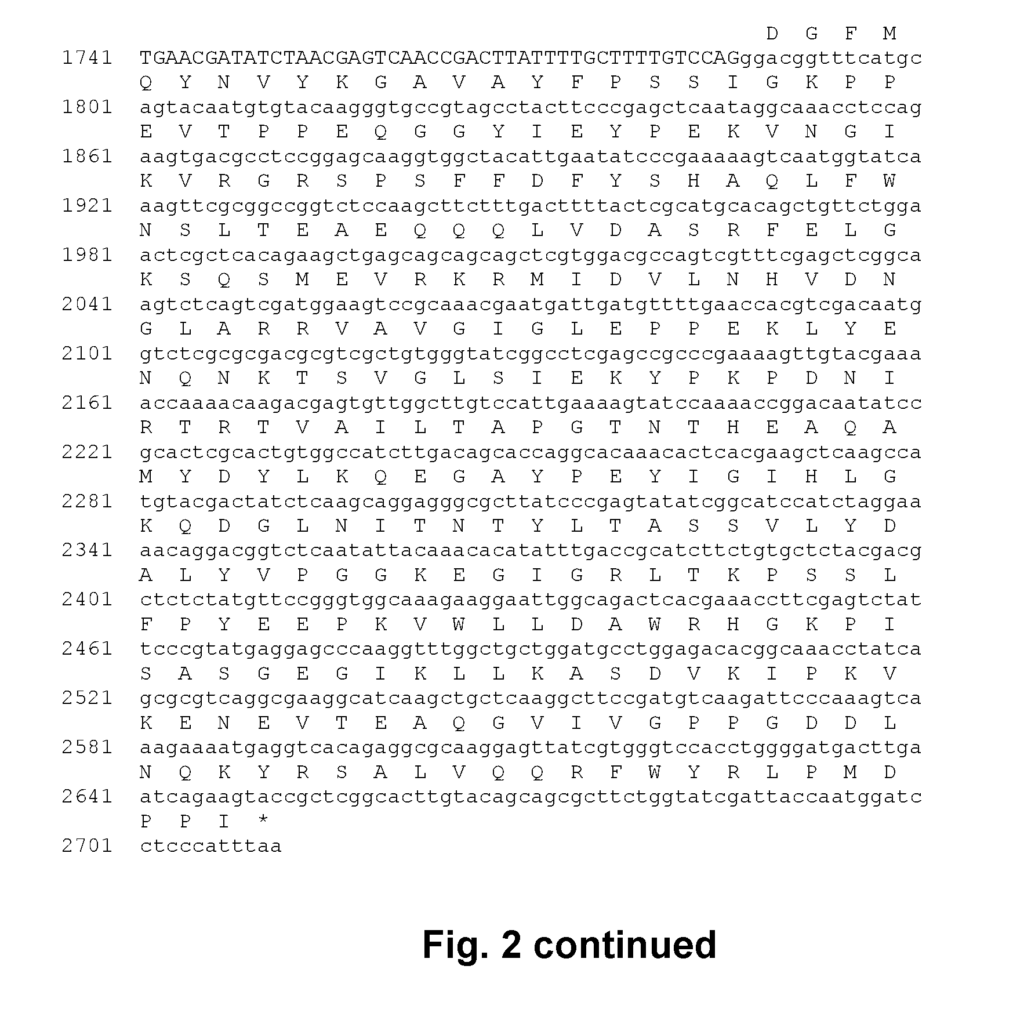
The present invention also relates processes for degrading a cellulosic substance or converting it, which include: treating the material with an enzymatic composition in presence of a catalase-active polypeptide of the invention. The processes may also include recovering the degraded material or the converted cellulosic.
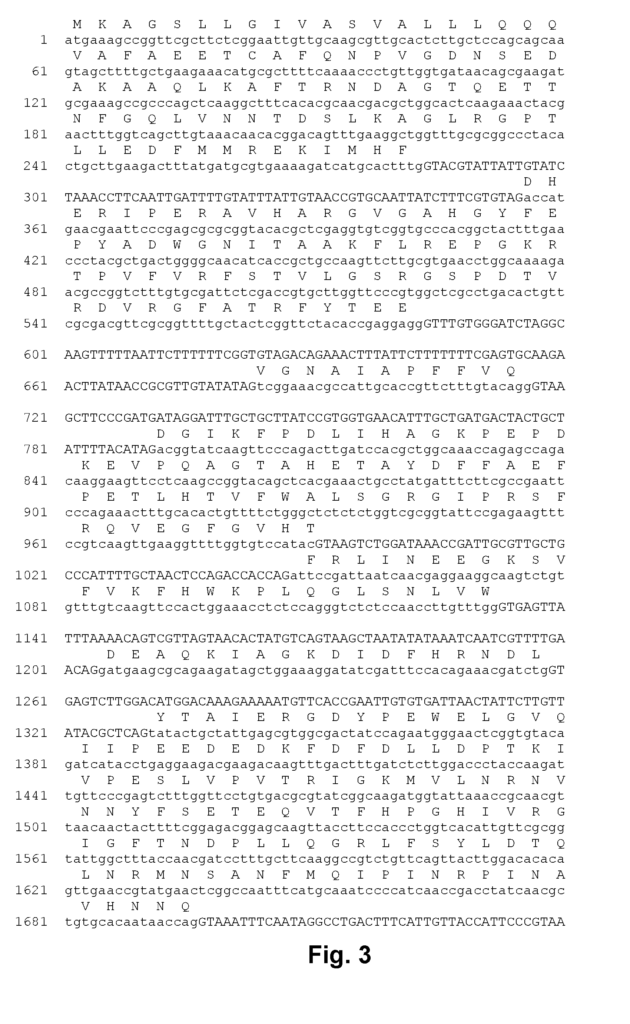
Click here to view the patent on Google Patents.
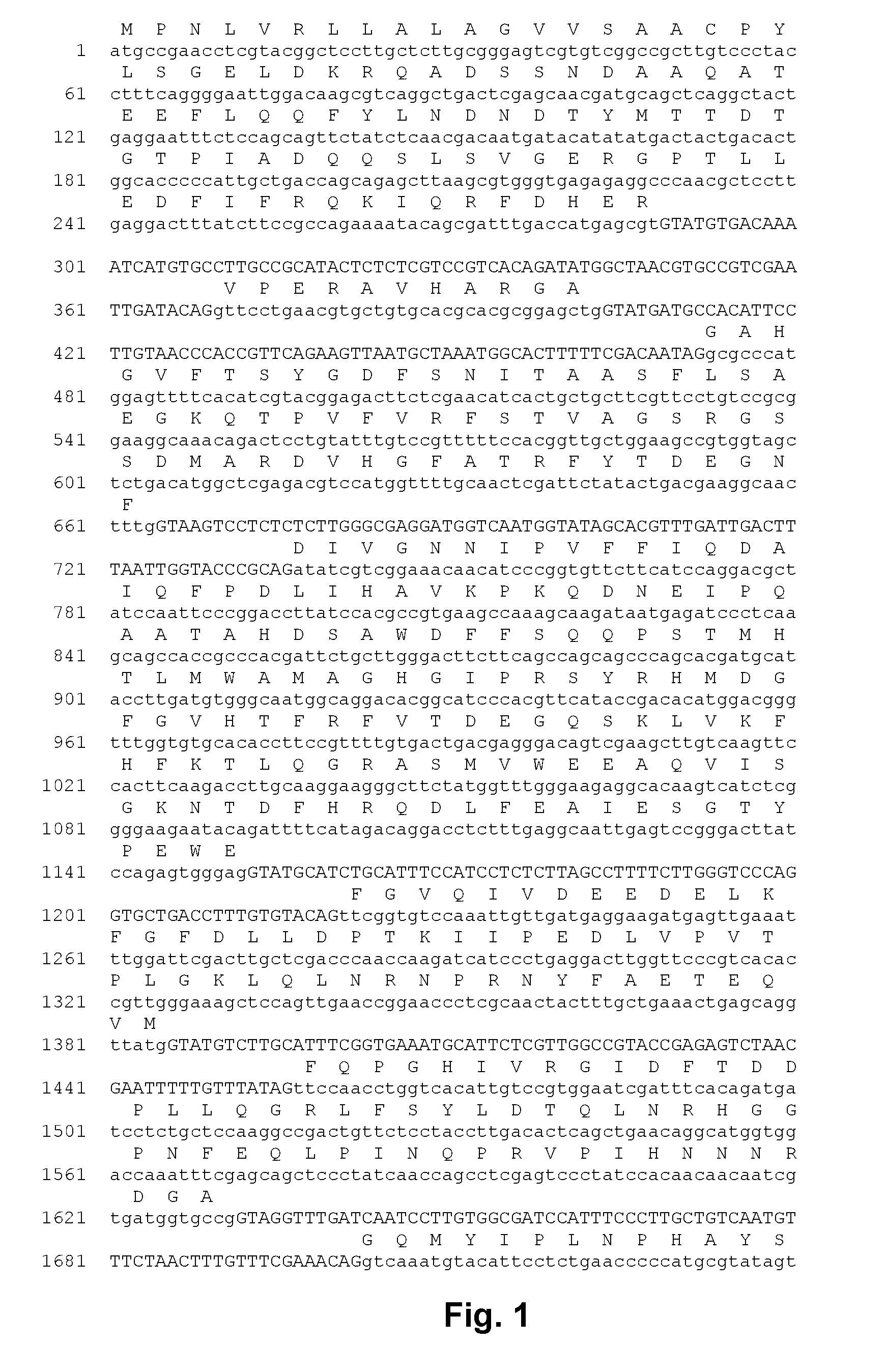
Leave a Reply